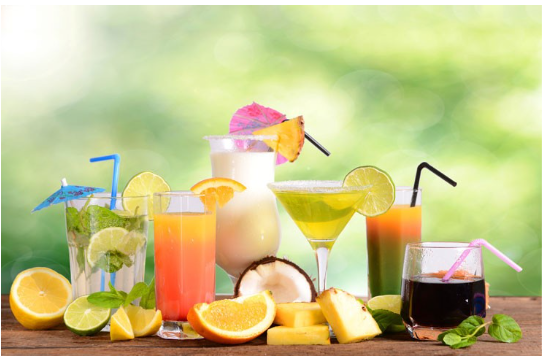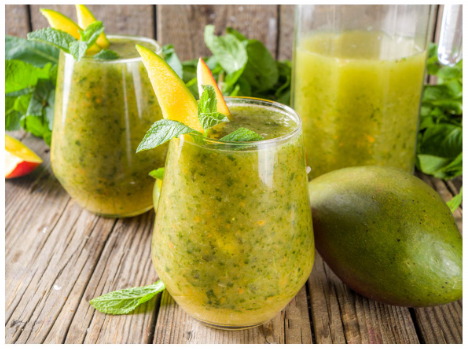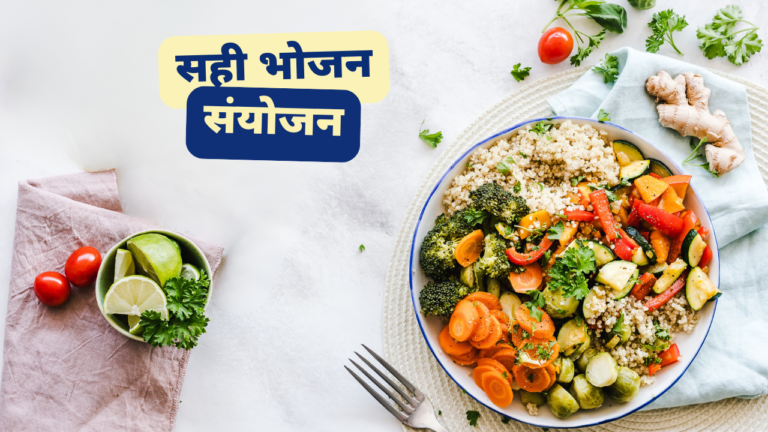Summer Care Juices
Summer Care Juices

As temperatures soar, it becomes increasingly important to keep our bodies cool and well-hydrated. Our bodies naturally crave more water, liquids, and lightly-cooked foods during the summer months to combat water loss through sweat and maintain optimal digestive functions. In this article, we’ll delve into various aspects of staying hydrated and refreshed during summer, including tailored drinks for different body constitutions, rejuvenating recipes, fluid intake guidelines, and essential summer food tips.
The Importance of Hydration
Hydration is crucial for overall health, especially in hot weather. Water is essential for various bodily functions, including regulating body temperature, aiding digestion, and transporting nutrients and oxygen to cells. Dehydration can lead to fatigue, headaches, dizziness, and even more severe complications if left untreated.
Fluid Intake Necessities
While the general recommendation is to drink at least 8 glasses of water a day, individual fluid needs vary based on factors such as age, weight, activity level, and climate. In hot weather, it’s important to drink more fluids to compensate for increased sweating. Aim to drink water regularly throughout the day and consider increasing your intake if you’re sweating excessively or engaging in strenuous activities.
Beating the Heat: Recognizing and Preventing Heat-Related Illness
As temperatures soar during the hot summer months, it’s essential to be aware of the risks associated with excessive heat exposure. Doing too much on a hot day, spending prolonged periods in the sun, or staying in overheated environments can lead to heat-related illnesses. High temperatures and humidity can strain the body’s ability to cool itself, potentially resulting in heat sickness. It’s crucial to recognize the symptoms early and take preventive measures to protect yourself from serious consequences.
Common Heat-Related Illnesses
- Heat Cramps: Painful muscle cramps and spasms, usually in the legs or abdomen, often resulting from strenuous activity in high heat.
- Heat Exhaustion: Symptoms include heavy sweating, weakness, dizziness, nausea, headache, and cool, clammy skin. If left untreated, it can progress to heatstroke.
- Heatstroke: A life-threatening condition where the body’s temperature regulation fails, leading to a dangerously high body temperature. Symptoms include confusion, unconsciousness, hot and dry skin, and a rapid, strong pulse. Heatstroke requires immediate medical attention.
Understanding the Differences Between Heat-Related Illnesses
It’s crucial to differentiate between various heat-related illnesses to recognize their symptoms and take appropriate actions. Here’s a breakdown of some common heat-related conditions:
- Dehydration

Definition: Dehydration occurs when the body loses more fluids than it takes in, leading to an imbalance in the body’s electrolytes.
Symptoms: Thirst, dry mouth, dark urine, fatigue, dizziness, confusion, and in severe cases, sunken eyes and rapid heartbeat.
Treatment: Rehydration with water or oral rehydration solutions. Severe cases may require medical attention and intravenous fluids.
- Heat Rash
Definition: Heat rash, also known as prickly heat, is a skin irritation caused by blocked sweat ducts.
Symptoms: Red bumps or small blisters, itching, and a prickling sensation on the skin.
Treatment: Keeping the affected area cool and dry, using calamine lotion or other soothing creams, and wearing loose-fitting clothing.
- Heat Cramps
Definition: Heat cramps are painful muscle spasms or cramps that occur during or after intense exercise in hot weather.
Symptoms: Muscle pain or spasms, usually in the abdomen, arms, or legs.
Treatment: Resting in a cool place, rehydrating with water or electrolyte solutions, gently stretching the affected muscles.
- Heat Syncope or Fainting
Definition: Heat syncope is a temporary loss of consciousness or fainting due to decreased blood flow to the brain, often caused by standing for long periods in the heat.
Symptoms: Dizziness, lightheadedness, nausea, and fainting.
Treatment: Moving to a cooler place, lying down with legs elevated, drinking water, and applying cool compresses.
Differentiating Factors
Cause: Dehydration results from inadequate fluid intake, while heat rash, cramps, and syncope are directly related to excessive heat exposure.
Symptoms: Each condition presents with distinct symptoms, ranging from skin irritation (heat rash) to muscle spasms (heat cramps) and fainting (heat syncope).
Treatment: Treatment varies based on the condition, focusing on rehydration, cooling, and symptom relief.
Recognizing the differences between these heat-related illnesses is essential for prompt identification and appropriate management. Maintaining hydration, staying cool, and avoiding prolonged exposure to high temperatures can help prevent these conditions during hot weather.
Importance of Fluid Intake in Summer:

During the hot summer months, our bodies lose more fluids through sweating to regulate body temperature. To stay hydrated and maintain optimal health, it’s crucial to increase fluid intake. Here are some key points to remember about fluid intake in summer:
Increased Sweating Requires Higher Fluid Intake
- Sweating is the body’s natural mechanism to cool down, but it also leads to the loss of water and electrolytes.
- Higher temperatures and humidity levels increase the rate of sweating, further emphasizing the need for adequate fluid intake.
Aim for at Least 8-10 Glasses of Water Daily
- The general recommendation is to drink at least 8 glasses (64 ounces) of water per day. However, during hot weather or when engaging in physical activity, you may need more.
- Individual fluid needs vary based on factors such as age, gender, activity level, and overall health.
Signs of Dehydration
- Thirst is a common early sign of dehydration. Other symptoms include dark yellow urine, dry mouth, headache, fatigue, and dizziness.
- Severe dehydration can lead to more serious complications, such as heat exhaustion or heatstroke, which require immediate medical attention.
Tips for Staying Hydrated
- Drink water regularly throughout the day, rather than waiting until you feel thirsty.
- Carry a reusable water bottle with you to remind yourself to drink water regularly.
- Include hydrating foods in your diet, such as fruits (e.g., watermelon, oranges) and vegetables (e.g., cucumbers, tomatoes).
- Limit the intake of sugary, caffeinated, and alcoholic beverages, as they can contribute to dehydration.
Monitoring Hydration Status
- Pay attention to the color of your urine. Clear or light yellow urine usually indicates adequate hydration, while dark yellow urine may indicate dehydration.
- Weigh yourself regularly, especially before and after exercise, to monitor for any significant changes due to fluid loss.
The Importance of Hydration for Health and Well-being
Proper hydration is crucial for maintaining overall health and well-being. Here are some key reasons why staying hydrated is essential:
- Regulation of Body Temperature: Water helps regulate your body temperature through sweating and respiration, especially important during hot weather or physical activity.
- Aids Digestion: Water is essential for the digestion and absorption of food. It helps break down food particles and supports the movement of nutrients through the digestive tract.
- Supports Nutrient Absorption: Water plays a key role in the absorption of nutrients from the food you eat. It helps transport nutrients to cells and remove waste products.
- Prevents Fatigue: Dehydration can lead to fatigue and reduced physical performance. Proper hydration ensures that your body can function optimally throughout the day.
- Prevents Headaches: Dehydration is a common cause of headaches. Drinking enough water can help prevent or reduce the frequency of headaches.
- Improves Cognitive Function: Proper hydration is important for brain function. Dehydration can impair cognitive function, affecting your concentration, memory, and mood.
Promotes Overall Well-being: Optimal hydration is essential for overall health and vitality. It can help improve skin health, maintain kidney function, and support a healthy cardiovascular system.
Nature’s Hydrating Foods for Summer
During the hot summer months, nature provides us with an abundance of hydrating foods that can help us stay cool and well-hydrated. Incorporating these foods into our diet can not only quench our thirst but also provide essential nutrients. Here are some hydrating foods to enjoy this summer:
Watermelon

- Water content: Watermelon is made up of about 92% water, making it an excellent hydrating fruit.
- Nutrients: It is rich in vitamins A and C, antioxidants, and amino acids like citrulline.
- Benefits: Helps keep you hydrated, supports heart health, and may reduce muscle soreness.
Cucumber
- Water content: Cucumber is composed of about 96% water, making it one of the most hydrating foods.
- Nutrients: It is a good source of vitamin K, potassium, and antioxidants.
- Benefits: Helps keep you hydrated, aids in digestion, and promotes skin health.
Oranges
- Water content: Oranges are approximately 86% water, making them a refreshing and hydrating fruit.
- Nutrients: They are high in vitamin C, fibre, and antioxidants.
- Benefits: Supports immune function, aids in digestion, and may reduce the risk of chronic diseases.
Other Hydrating Foods
- Strawberries: These berries are about 91% water and are rich in vitamin C and antioxidants.
- Pineapple: Pineapple is about 86% water and is a good source of vitamin C and manganese.
- Peaches: Peaches are approximately 89% water and are rich in vitamins A and C, as well as antioxidants.
How to Incorporate Hydrating Foods
- Enjoy watermelon slices as a refreshing snack or blend them into a hydrating smoothie.
- Add sliced cucumbers to salads or make cucumber-infused water for a refreshing drink.
- Snack on oranges or incorporate them into fruit salads for a burst of hydration and flavour.
By including these hydrating foods in your diet, you can stay cool, refreshed, and well-hydrated throughout the summer.
Understanding Prakruti and Doshas in Naturopathy

Naturopathy, a system of medicine that emphasizes natural remedies and the body’s ability to heal itself, considers individual body constitutions known as Prakruti and Doshas. These concepts are based on the ancient Indian healing system of Ayurveda and are used to understand an individual’s physical, mental, and emotional characteristics. Here’s a brief overview of Prakruti and the three Doshas:
Prakruti
- Definition: Prakruti refers to an individual’s natural constitution, determined at the time of conception and influenced by genetic and environmental factors.
- Unique Combination: Each person has a unique Prakruti, which is determined by the predominance of the three Doshas at birth.
Three Doshas
1. Vata Dosha
- Elements: Air and ether (space) elements.
- Characteristics: Vata is characterized by qualities of dryness, coldness, lightness, and movement.
- Functions: Governs movement, including breathing, circulation, and nerve impulses.
- Imbalance: Imbalance in Vata can lead to issues like anxiety, insomnia, and digestive problems.
2. Pitta Dosha
- Elements: Fire and water elements.
- Characteristics: Pitta is associated with qualities of heat, intensity, lightness, and fluidity.
- Functions: Governs metabolism, digestion, and body temperature regulation.
- Imbalance: Imbalance in Pitta can manifest as irritability, inflammation, and digestive disorders.
3. Kapha Dosha
- Elements: Water and earth elements.
- Characteristics: Kapha is characterized by qualities of heaviness, slowness, coolness, and stability.
- Functions: Governs structure and lubrication in the body, providing stability and moisture.
- Imbalance: Imbalance in Kapha can lead to weight gain, lethargy, and respiratory issues.
Understanding Dosha Imbalance
- Balancing Act: According to Ayurveda and naturopathy, maintaining balance among the three Doshas is crucial for overall health and well-being.
- Imbalance Causes: Imbalances can occur due to various factors, including diet, lifestyle, stress, and environmental changes.
- Treatment Approach: Treatment in naturopathy often focuses on restoring balance through lifestyle modifications, dietary changes, herbal remedies, and stress management techniques.
Drinks According to Dosha in Naturopathy
In naturopathy, selecting beverages that align with your Dosha can help maintain balance and promote overall well-being. Here are some drink recommendations tailored to each Dosha:
For Vata Dosha
- Warm Ginger Tea: Ginger’s warming properties can help balance Vata’s coldness and improve digestion.
- Turmeric Milk (Golden Milk): Turmeric, with its anti-inflammatory properties, can help soothe Vata-related discomforts and promote overall warmth.
For Pitta Dosha
- Coconut Water: Coconut water is cooling and hydrating, making it ideal for pacifying Pitta’s heat.
- Mint Lemonade: Mint’s cooling effect, combined with lemon’s refreshing acidity, can help cool Pitta and aid digestion.
For Kapha Dosha
- Spiced Teas: Herbal teas with warming spices like ginger, cinnamon, and cardamom can help balance Kapha’s excess moisture and promote digestion.
- Warm Lemon Water: Warm water with lemon can help stimulate digestion and detoxification, balancing Kapha’s heavy and sluggish tendencies.
Considerations
- Individual Variation: While these recommendations are general, individual variations in Dosha dominance and constitution should be considered.
- Balancing Lifestyle: Along with appropriate beverages, balancing lifestyle factors such as diet, exercise, and stress management is crucial for overall well-being.
- Consultation: For personalized recommendations, consulting with a naturopath or Ayurvedic practitioner can provide tailored guidance based on your unique constitution and health goals.
Making Healthier Drink Choices

Soda, both sugar-sweetened and diet varieties, has been linked to various health issues, including weight gain, tooth decay, type 2 diabetes, and cardiovascular problems. Fortunately, there are plenty of healthier alternatives available. Here are some popular drinks and considerations for making healthier choices:
Healthier Alternatives to Soda
- Water: The best choice for hydration, water has zero calories and is essential for overall health.
- Milk: Rich in calcium and protein, milk can be a nutritious choice, especially for bone health.
- Coffee: Black coffee is low in calories and can provide antioxidants. Avoid adding excessive sugar or cream.
- Tea: Both green and herbal teas are hydrating and can provide various health benefits, such as antioxidants and relaxation.
- Fruit Juices (in moderation): While natural fruit juices can be a source of vitamins, they can also be high in sugar. Enjoy them in moderation and opt for whole fruits when possible.
Considerations for “Flavoured” Water and Vitamin Water
- Sugar Content: Many flavoured waters and vitamin waters contain high amounts of sugar. Check the labels and choose options with little or no added sugars.
- Artificial Sweeteners: Some flavoured waters use artificial sweeteners, which can have their own health risks. Opt for naturally sweetened or unsweetened options when possible.
Making Informed Choices
- Read Labels: Check the nutrition labels for sugar content and ingredients. Choose drinks with minimal added sugars and artificial ingredients.
- Moderation: Even with healthier options, moderation is key. Drinking excessive amounts of any beverage, even if it’s considered healthy, can lead to health issues.
DIY Healthier Flavoured Water
As health educators, you’re well aware of the importance of promoting healthy hydration habits. Making your own flavoured water is a fantastic way to encourage people to stay hydrated while avoiding the pitfalls of sugary or artificially sweetened beverages. Here are some simple and delicious recipes for DIY flavoured water:
Fruit-Infused Water
- Ingredients: Lemon, lime, orange, grapefruit slices, berries, kiwi.
- Instructions:
- Add sliced fruits to a pitcher of water.
- Allow the water to sit for a few hours or overnight in the refrigerator to infuse.
- Serve chilled, and enjoy the refreshing, natural flavors.
Iced Tea
- Ingredients: Fruity herbal tea bags, unrefined sugar or maple syrup (optional).
- Instructions:
- Brew the herbal tea as per the package instructions.
- Add a bit of unrefined sugar or maple syrup for sweetness, if desired.
- Allow the tea to cool, then refrigerate until cold.
- Serve over ice for a refreshing and naturally sweetened beverage.
Benefits of DIY Flavored Water
- No Added Sugars: By using fresh fruits and herbs, you can enjoy the natural flavors without the need for added sugars or artificial sweeteners.
- Hydration: Infusing water with fruits and herbs can make it more appealing, encouraging people to drink more and stay hydrated.
- Variety: With endless fruit and herb combinations, you can create a variety of flavored waters to suit different tastes and preferences.
Educating Others
- Promote the Benefits: Share the benefits of homemade flavored water, such as hydration, natural flavors, and avoiding added sugars.
- Encourage Creativity: Encourage people to experiment with different fruits, herbs, and teas to find their favorite combinations.
- Lead by Example: Show how easy and enjoyable it is to make your own flavored water, and inspire others to do the same.
By promoting homemade flavored water as a healthy and delicious alternative to sugary drinks, you can help others make positive changes to their hydration habits and overall health.
Refreshing Drink Recipes for Summer

As the temperature rises, staying hydrated is essential. These refreshing drink recipes are not only hydrating but also packed with flavor and health benefits.
Minty Cucumber Cooler
- Ingredients:
- Cucumber slices
- Mint leaves
- Lemon juice
- Chilled water
Instructions:
- Blend cucumber slices, mint leaves, and lemon juice with chilled water.
- Strain the mixture for a smooth consistency.
- Serve over ice for a refreshing and cooling drink.
Tropical Turmeric Smoothie
Ingredients:
- Pineapple chunks
- Mango chunks
- Turmeric powder (or fresh turmeric)
- Coconut milk
- Ice cubes
Instructions:
- Blend pineapple, mango, turmeric, and coconut milk until smooth.
- Add ice cubes and blend again until desired consistency is reached.
- Pour into a glass and enjoy a nourishing and anti-inflammatory beverage.
Benefits of These Drinks
- Hydration: Both drinks are hydrating, helping you stay cool and refreshed in hot weather.
- Nutrient-Rich: Cucumber is hydrating and contains vitamins and minerals. Mint aids digestion and adds a refreshing flavour. Lemon provides vitamin C and adds a tangy kick.
- Anti-Inflammatory: Turmeric in the smoothie has anti-inflammatory properties, which can help reduce inflammation in the body.
Serving Tips
- Garnish: Garnish the drinks with a slice of cucumber or a sprig of mint for a beautiful presentation.
- Variations: Feel free to customize these recipes by adding other fruits or herbs based on your preferences.
Summer drinks:
It’s that time of the year when our body craves some flavorful hydration and all we want to do is down cold drinks by the gallon. But leave marketable drinks in the summer and try using tasty and healthy drinks at home. Made from seasonal fruits, herbs and spices, traditional coolers are the perfect way to beat the heat on sizzling summer days. Every region in India has its own versions, each perfected by years of experience and passing time. Moreover, each of them has a story of its own, a tale of centuries-old culture and cherished memories.
Seasonal Attraction of summer:
- Aam Panna:

One of the perks of living in a tropical nation like India is the opportunity to indulge in mango-based summer drinks, of which the flavor-packed aam panna undoubtedly has the widest appeal.
2. Anantmool Sharbat:
Used in Ayurveda since time immemorial, nannari (also called anantmool) is an extremely effective natural coolant that is definitely a heat stroke’s worst nightmare. People in the scorching summer prefer cold, healthy and flavored drinks.
3. Jal Jeera / Shikangi :
Summertimes are synonymous with the incredibly refreshing jal jeera (also called shikanji in some places), a lemonade given a flavourful twist by simple spices like roasted cumin, pepper and black salt. It is especially popular in north India where one can often spot hand carts with giant clay matkas on the streets, selling chilled jal jeera garnished with mint leaves and boondi.
4. Bel Sharabat:
A seasonal summer fruit filled with nutritional goodness, Bel (Wood Apple) (also known as Bellada Hannu in Kannada and Maredu in Telugu) is said to cure everything from heatstroke and upset tummy to dehydration and diabetes. Once you’ve broken through its woody outer shell, soak the pulp in water, and add jaggery and lemon juice to create a simple but potent cooler.
5. Piyush:
A much-loved Maharashtra and Gujarat, Piyush is a delectably creamy concoction made by combining shrikhand, buttermilk, nutmeg, saffron and an assortment of dry fruits in the right quantity. Interestingly, the drink’s name literally means ‘amrit’ (or the drink of the Gods) and is a tribute to its soothing, nectar-like taste.
6. Sambharam/ Neer Mor:
A summer favorite savored across south India, samba ram (also called neer mor) is nothing but delicious spicy buttermilk made from curd, green chillies, ginger and yoghurt. Every southern state has its very own version of this summer staple that is believed to have digestive, probiotic, hydrating and reviving properties.
7. Lassi:
Who doesn’t love this hearty Punjabi summer cooler? Often touted as the oldest smoothie in the world, a sip of luscious lassi (often served with a dollop of decadent malai) cascading down your parched throat can instantly lift your mood and provide relief from the sultry heat. Interestingly, Odisha has its own unique version of the lassi – the Oriya lassi also has grated coconut, rabdi, cherries and myriad nuts!
8. Mango Mastani:
Pune’s very own culinary creation, Mango Mastani is a luscious street drink that will remind you that mango is indeed the true king of the fruit realm. It is basically a velvety mango milkshake topped with chunks of fresh fruit, crunchy nuts, and succulent cherries and whipped cream.
9. Jil Jil Jigarthanda:
Made by blending chilled milk, kadal paasi (edible sea algae), nannari syrup, almond resin, some basundi and dollops of ice cream, this delightful drink does what its name implies cool the heart on hot summer days!
10. Thandai:

A cooling drink made to delight the senses, Thandai is a tantalizing version of milk energized with almonds, fennel seeds, watermelon seeds, saffron and fragrant spices. Traditionally associated with festivals like Mahashivratri and Holi, this decadent drink is a soothing refresher in the season of soaring temperatures.
11. Gondhoraj Ghol:
Bengal’s very own version of buttermilk, Gondhoraj Ghol is a refreshing marriage of curd, sugar, black salt, iced water, and the pulpy juice of the state’s highly prized oblong-shaped wondrous citrus has a very subtle aroma. An unusual flavor (similar to the kaffir lime) that sends most Bengalis into paroxysms of joy.
12. Panakam:
A much-savoured household drink in south India, Panakam’s age-old recipe is a confluence of the sweetness of jaggery, the uplifting fragrance of cardamom, and the sharp heat of pepper and ginger. With a great balance of essential electrolytes, this traditional drink is so refreshing that you can gulp down a glass and still be asking for more.
13. Imli Ka Amlana:
A little-known drink from the Marwar region of Rajasthan, Imli ka Amlana is a lip-smacking combination of tangy tamarind, black salt, roasted spices and mint leaves in chilled water. Sou sweet and spicy, at the same time, it is the most desirable way to cool during a hot summer. This drink is good for health.
14. Tamarind:
Imli Chutney is common But have you tired its sharbat Its too good not only in summer but for those who have excessive sweating in palm and foot sole.
15. Kokum:
Kokum sherbet is one of the greatest natural summer drinks for staying hydrated. This fruit has the potential to cool your whole body down and is a powerhouse of nutrients like B vitamins, ascorbic acid, manganese, potassium, dietary fibre, and garcinol. It is also known to soothe your digestion.
16. Chandan:
Sandal Sharbat not only hydrates you but also heals your skin that becomes rough due to dehydration. Treat yourself with this natural drink in summers. Sandal Sharbat helps to remove the tan and reduce the redness due to sunburn. The sandal has cooling properties and heals skin damage from harmful sun rays.
17. Khus Khus Sharbat:
It is basically a refreshing beverage drink recipe prepared with poppy seeds, milk, sabja seeds, sugar, fennel seeds, and a choice of dry fruits. Khus Khus Sharbat Recipe is one such creamy and rich traditional drink served for any occasion and season.
18. Nimbu / Lemon:

Shikanji – Aids in eliminating body toxins. Lemon’s vitamin C enhances immunity and detoxifies. It also aids digestion and liver cleansing, relieving joint pain and improving skin tone. Cumin, a key element in shikanji, promotes weight loss, manages diabetes, and reduces inflammation.
19. Coriander Seeds:
Drinking coriander juice will bring the following effects: Helps diuretics, lowers cholesterol in the blood. Treats bloating, indigestion due to digestive disorders. Support weight loss Help beauty skin, anti-inflammatory acne treatment.
Balancing Raw and Cooked Foods for Health
Achieving a balance between raw and cooked foods in your diet can provide a range of benefits, including optimal digestion and assimilation of nutrients. Here’s why incorporating both types of foods is beneficial:
Raw Foods
- Enzymes: Raw foods, such as salads and fruits, contain natural enzymes that aid in digestion and nutrient absorption.
- Hydration: Many raw foods, especially fruits and vegetables, have high water content, contributing to hydration and overall health.
- Nutrients: Raw foods are rich in vitamins, minerals, and antioxidants that support overall health and well-being.
Cooked Foods
- Warmth and Nourishment: Cooked foods, such as steamed vegetables and soups, provide warmth and comfort, especially during colder months.
- Ease of Digestion: Cooking can break down fibers and make certain nutrients more easily digestible and absorbable.
- Versatility: Cooking allows for the incorporation of a wide variety of ingredients and flavors, enhancing the overall nutritional content of meals.
Tips for Balancing Raw and Cooked Foods
- Include Both: Aim to include a variety of raw and cooked foods in your diet to benefit from the unique advantages of each.
- Listen to Your Body: Pay attention to how different foods make you feel and adjust your intake accordingly.
- Variety is Key: Incorporate a variety of raw and cooked foods to ensure you’re getting a broad spectrum of nutrients.
General Food Guidelines for Summer
During the summer months, it’s important to pay attention to your diet to stay healthy and hydrated. Here are some general do’s and don’ts to keep in mind:
Do’s:
- Consume Fresh, Seasonal Fruits and Vegetables: Opt for fruits and vegetables that are in season, as they are often more flavorful and nutrient-dense.
- Include Hydrating Foods: Incorporate foods with high water content, such as cucumbers, melons, and berries, to help stay hydrated.
- Opt for Light and Easily Digestible Meals: Choose light and easily digestible meals to avoid feeling weighed down in the heat.
Don’ts:
- Avoid Excessive Intake of Spicy, Oily, or Heavy Foods: These foods can be harder to digest and may lead to discomfort in hot weather.
- Limit Processed and Sugary Beverages: Processed and sugary beverages can contribute to dehydration and provide empty calories.
- Minimize Alcohol and Caffeine Consumption: Alcohol and caffeine can dehydrate the body, so it’s best to consume them in moderation and balance them with plenty of water.
By following these general guidelines, you can support your health and well-being during the summer months and stay feeling your best.
In conclusion, embracing naturopathy principles can be a valuable approach to maintaining balance and harmony, especially during the summer season. By choosing cooling and healthy drinks, staying hydrated, and following mindful food practices, you can support your overall health and well-being.
Remember, water is essential for a healthy lifestyle, being involved in every one of your body’s processes and making up a significant part of your cells’ structure. Adding a bit of flavor to your water can make staying hydrated more enjoyable and achievable. So, if a splash of flavor helps you drink more water, go for it!
Thank you for reading and here’s to a healthy and hydrated summer ahead!






